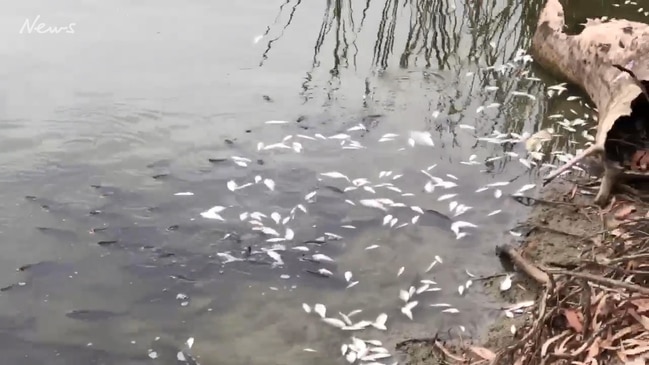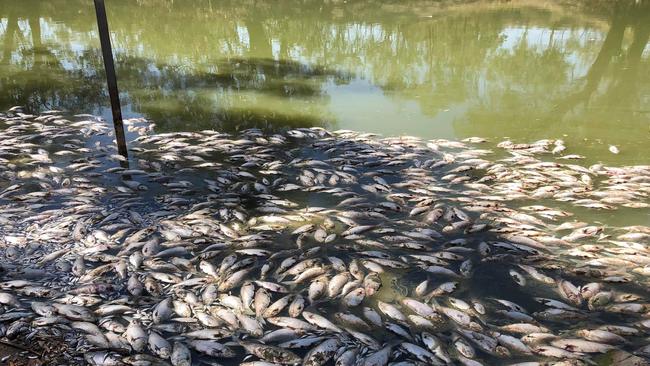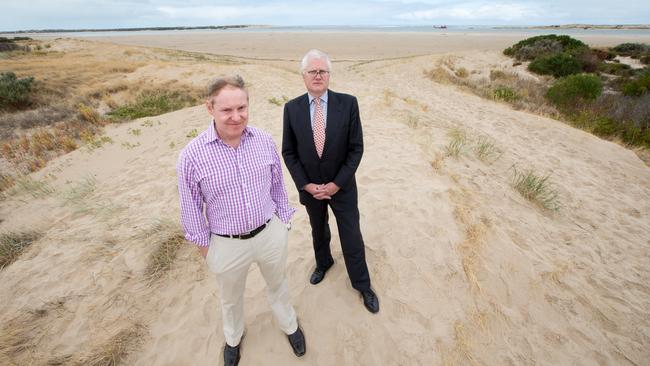Murray-Darling Royal Commission report to be delivered to Governor on January 29
A hefty, likely damning report into the Murray-Darling from the state Royal Commissioner will be handed to the Governor on Tuesday. Here’s what will happen next.

SA News
Don't miss out on the headlines from SA News. Followed categories will be added to My News.
News this past week:
- More mass fish deaths in Darling River
- Rally calls for Basin’s rescue
- Productivity Commission says plan needs serious reform
Nothing brings attention to the river system like hordes of dead fish, floating on the rank water.
Reports of yet another mass fish death at Menindee Lakes on Monday will galvanise debate over the Murray-Darling Basin, at the same time as a major report is handed to the State Government.
Royal Commissioner Bret Walker, SC, will deliver his final report to Governor Hieu Van Le Tuesday morning.
It’s set to accuse the Murray-Darling Basin Plan of being unscientific, to accuse the Murray-Darling Basin Authority of badly handling its implementation, and to question whether SA will ever get the water the environment needs.

The report won’t cover the fish deaths, despite a push to extend the inquiry so it could.
It’s also lacking input from federal politicians and public servants whose fingers are all over the Murray-Darling Basin Plan, because trying to work out whether the state could force federal people to appear would have dragged out the Commission, and the Liberal State Government refused to extend the reporting deadline.
While it is set to be highly critical of the MDBA, the MDBA was constrained from answering the accusations flung its way.
But it will wrap up months of hearings and about 150 submissions that gathered information from a range of scientists, the CSIRO, former employees of the MDBA, academics, and the State Government.
And if the final hearing of the royal commission is anything to go by, it will not go gently. At that hearing, in October, Senior Counsel Assisting Richard Beasley gave Commissioner Walker a rundown of what they’d heard so far.
Original Plan
The original plan demanded that 2750GL be clawed back for the river, first through buying water entitlements back from farmers, then through a range of water-saving projects.
The Commission heard from witnesses working on that figure that it was unclear how it had been arrived at. The original research had said more than 4000GL – perhaps as much as 6900GL – would need to be saved; then, suddenly, people were being told the number had to start with a “2”. Mr Beasley said that “every scientist” who gave evidence said the process to get to 2750GL was “not science”.
South Australia
The South Australian Government fought for an “extra” 450GL of water for the state’s environment; for the Coorong, the Lower Lakes and the Murray Mouth. But Mr Beasley says the projects intended to deliver that 450GL lack transparency. Upstream states are reluctant to help their downstream cousin. Mr Beasley quotes the former Commonwealth Environmental Water Holder, David Papps, who told the Commission: “I would bet my house that SA is not getting that water”.

Implementation
Various reviews – last week’s Productivity Commission report among them – have warned that we are reaching a very tricky stage in the plan. There are meant to be a range of water recovery plans in place by June this year but there are serious doubts over whether they will be ready, and even if they were, whether they would work.
Mr Beasley also lashed the “total lack of transparency” in the implementation of the plan, and said it had “not been based on the best available science”. He went further and said that the implementation had been “marred by maladministration”.
“While the whole of the Basin environment has and will continue to suffer as a result of this, the state whose environment will suffer the most is SA,” Mr Beasley said.
Water rorts
So after the plan – itself a compromise between governments with different agendas – was laid down, and questions started to arise over its implementation, it was shaken by revelations of alleged water theft and rorting. These reports fed into the eternal battle between upstream irrigators and farmers, and those barracking for the downstream environment.
Fish kills
Then there were those extraordinary pictures and the shocking videos of hundreds of thousands of dead fish in NSW. Native fish gasping for air then suffocating as blue-green algae thrived in the low flows and sucked the oxygen out of the water.
What now?
While the fish have attracted eyeballs, the Commission’s report will return attention to SA-specific issues. The State Opposition is calling on the Government to release it immediately and the Government says it will do so as soon as possible – while many will be ready to pounce on any delay.
The Government had a very tetchy relationship with the Commission from the beginning, so its response to the report could well be lukewarm.



